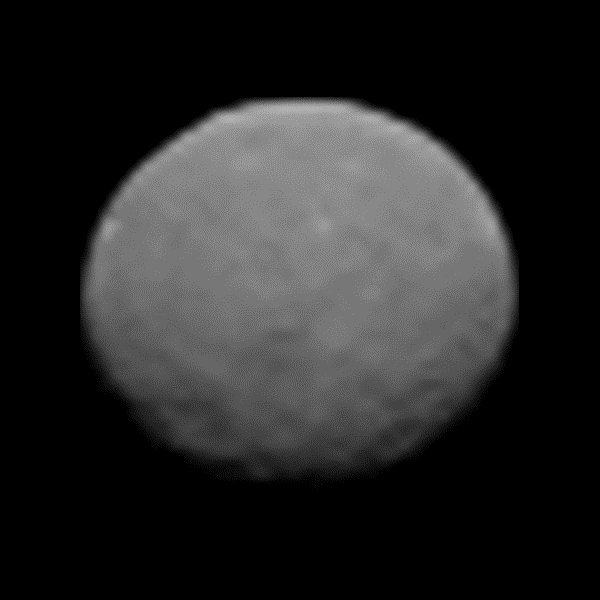Closing in on Mysterious Ceres
Yet another world that may have an internal ocean.
NASA’s Dawn spacecraft, which is due to reach Ceres on March 6, just transmitted the sharpest images ever taken of that dwarf planet, from a distance of 147,000 miles. Discovered in 1801, Ceres is the largest of the main-belt asteroids, with a diameter of 590 miles. In fact, this one body contains about one third of the total mass in the asteroid belt located between Mars and Jupiter—enough mass that it may, like some of the moons of the outer solar system, have liquid water underneath its surface.

Last month at the fall meeting of the American Geophysical Union, Jian-Yang Li of the Planetary Science Institute and colleagues suggested that water must have played a significant role in the evolution of Ceres. Spectral reflectance measurements of its surface reveal tell-tale signs of hydrated minerals and carbonate rocks—indications of liquid water sometime in the dwarf planet’s past. By some estimates, water might account for up to 40 percent of Ceres’ mass, though most of it would be in the form of ice.
Planetary evolution models also suggest that liquid water would have been present on early Ceres, and would have driven hydrothermal activity for a few tens of million years after the body formed. If that is the case, Ceres may once have harbored a subsurface ocean, and pockets of liquid water may still exist under its icy crust—particularly if radioactive material still provides heating from the interior. Ceres is large enough that this is an intriguing possibility.
The astrobiological potential of Ceres has already been noted by scientists contributing to a NASA survey of priorities for solar system exploration. Ceres is intermediate in nature between the rocky bodies of the inner Solar System and the icy moons of Jupiter and Saturn. While the outer solar system is extremely rich in organic material, combining that with the rock and water composition of the inner planets would increase the potential for habitability. Since Ceres has no atmosphere, we would not expect life to exist close to the surface, but it may be viable underneath the icy crust.
As the Dawn spacecraft closes in on Ceres, little is known about the object. We don’t know, for example, whether the water vapor seen emanating from it is due to internal heating (as on Europa and Enceladus) or simply from ice sublimating on the asteroid’s surface. Dawn’s exploration of Ceres may therefore turn up a few surprises.
/https://tf-cmsv2-smithsonianmag-media.s3.amazonaws.com/accounts/headshot/Dirk-Schulze-Makuch-headshot.jpg)
/https://tf-cmsv2-smithsonianmag-media.s3.amazonaws.com/accounts/headshot/Dirk-Schulze-Makuch-headshot.jpg)